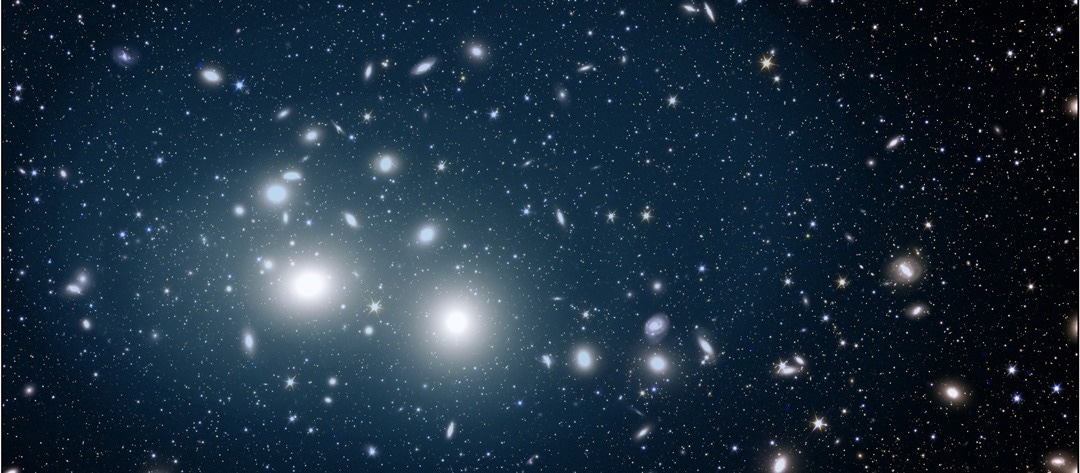Reviewed by Lexie CornerMay 24 2024
A discovery by University of Nottingham astronomers provides insight into the origins of the celestial wanderers. The study will be published in Astronomy and Astrophysics.
 Captured by the Euclid satellite. Depicts the Perseus cluster of galaxies bathed in a gentle, soft blue light emanating from orphan stars. These orphan stars are dispersed throughout the cluster, extending up to 2 million light-years from its center. The cluster galaxies stand out as luminous elliptical shapes against the dark expanse of space. Image Credit: ESA/Euclid/Euclid Consortium/NASA, image processing by M. Montes (IAC) and J.-C. Cuillandre (CEA Paris-Saclay)
Captured by the Euclid satellite. Depicts the Perseus cluster of galaxies bathed in a gentle, soft blue light emanating from orphan stars. These orphan stars are dispersed throughout the cluster, extending up to 2 million light-years from its center. The cluster galaxies stand out as luminous elliptical shapes against the dark expanse of space. Image Credit: ESA/Euclid/Euclid Consortium/NASA, image processing by M. Montes (IAC) and J.-C. Cuillandre (CEA Paris-Saclay)
The first scientific images obtained by the Euclid satellite mission show that the Perseus cluster of galaxies contains over 1,500 billion orphan stars.
With thousands of galaxies, the Perseus cluster is one of the universe's most massive structures, situated 240 million light-years from Earth. However, in the middle of this cosmic ensemble, the Euclid satellite saw the orphan stars—faint, ghostly light—drifting between the galaxies in the cluster.
The existence of orphan stars outside these structures raised intriguing questions about their origins since stars naturally form within galaxies.
We were surprised by our ability to see so far into the outer regions of the cluster and discern the subtle colors of this light. This light can help us map dark matter if we understand where the intracluster stars came from. By studying their colors, luminosity, and configurations, we found they originated from small galaxies.
Nina Hatch, Professor and Project Lead, School of Physics and Astronomy, University of Nottingham
The bluish color and grouped arrangement of the orphan stars define them. Based on these unique features, the astronomers hypothesize that the stars were ripped from the edges of galaxies and from the total disruption of smaller cluster galaxies, known as dwarfs.
After being split off from their parent galaxies, the orphaned stars were predicted to orbit the largest galaxy in the cluster. This research showed that the orphan stars circled a point halfway between the cluster's two brightest galaxies.
Dr. Jesse Golden-Marx, a Nottingham astronomer involved in the study, commented, “This novel observation suggests that the massive Perseus cluster may have recently undergone a merger with another group of galaxies. This recent merger could have induced a gravitational disturbance, causing either the most massive galaxy or the orphan stars to deviate from their expected orbits, thus resulting in the observed misalignment.”
This diffuse light is more than 100,000 times fainter than the darkest night sky on Earth. But it is spread over such a large volume that when we add it all up, it accounts for about 20% of the luminosity of the entire cluster.
Dr. Matthias Kluge, Department of Extraterrestrial Physics, Max-Planck Institute
ESA's Euclid mission aims to investigate the make-up and development of the dark universe. By observing billions of galaxies spanning over a third of the sky, out to 10 billion light-years, the space telescope will produce an incredible map of the Universe's large-scale structure across space and time. Euclid will investigate the formation of structure and the expansion of the Universe throughout cosmic history, providing additional insights into the nature of dark energy and dark matter, as well as the function of gravity.
This work was only possible thanks to Euclid’s sensitivity and sharpness.
Dr. Mireia Montes, Astronomer, Institute of Astrophysics, Canary Islands
Euclid’s revolutionary design means it can take images with similar sharpness as the Hubble Space Telescope but covering an area that is 175 times larger.